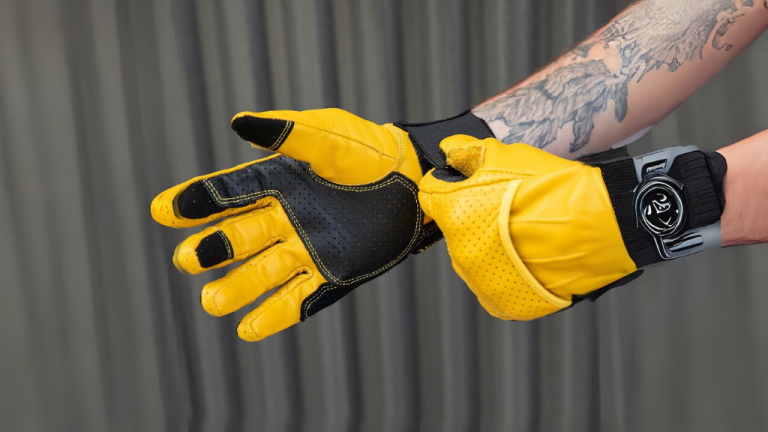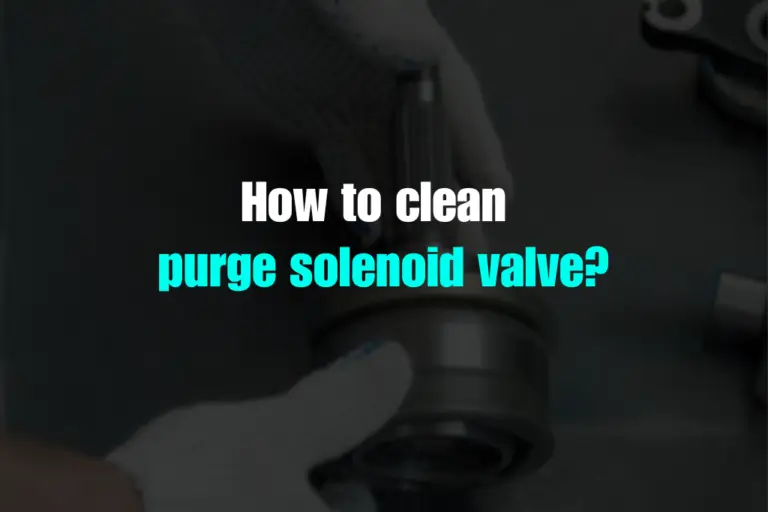If you’re having trouble starting your car, or find it shaking unnaturally when in an idle state, chances are, your car has a clogged purge solenoid valve. It’s easy to clean a dirty purge solenoid valve though. Here’s a simple guide on how to clean purge solenoid valve.
Before we get started, let’s understand what a purge solenoid valve is.
What is a Purge Solenoid Valve?
Your car’s evaporative emission control system, also known as the EVAP system, has a crucial part called the Purge Solenoid Valve.
This valve acts like a gatekeeper, controlling the flow of fuel vapors from a charcoal canister back into the engine.
Signs of a Bad Purge Solenoid Valve
A faulty purge solenoid valve can cause several problems in your car.
- Check Engine Light: When a vehicle’s computing system identifies an issue with a Purge Solenoid Valve, it triggers the Check Engine Light to alarm the driver.
- Worse Gas Mileage: If the valve gets stuck open, too much fuel vapor floods the engine, creating a rich mixture that burns inefficiently. This translates to fewer miles per gallon.
- Uneven Engine Idle: A stuck open or closed valve disrupts the proper fuel mixture, causing the engine to run rough and shaky when idling.
- Hard Starts: A stuck closed valve prevents fuel vapors from being released, making it harder for your engine to start.
- Failing Emissions Tests: Since the purge valve helps control emissions, a malfunctioning one can cause your car to fail an emissions test.
- Reduced Performance: In serious cases, a faulty purge valve can even lead to power loss and difficulty accelerating.

Tools Required to Clean Purge Solenoid Valve
Here’s a list of tools required how to clean a Purge Solenoid Valve:
- A piece of rag or a clean cloth.
- Protective Eyewear & Gloves
- Throttle Body Cleaner/Carburetor Cleaner
- Socket Set/Wrench
- Pliers
How To Clean Purge Solenoid Valve Quickly: (The step-by-step guide)
- Turn off the engine and let it cool down.
- Wear Gloves and Safety Glasses.
- Pop The Hood Open & Locate The Solenoid Valve.
- Detach The Solenoid Valve.
- Cleanse The Solenoid Valve.
- Rub The Valve Clean.
- Re-install The Valve.
- Reconnect The Battery.
To get started, at first we ought to learn how to detach a Purge Solenoid Valve. Just follow these simple steps.
Step-1: Turn off the engine and let it cool down
Since the purge valve is located under the hood, it’s important for the engine to be cool before you start working. If you’ve just driven the car, wait at least 10 minutes to allow the engine to cool down sufficiently.
Step-2: Wear Gloves and Safety Glasses
Protect your eyes, hands and skin from possible dirt and debris splatters onset by the cleaning process.
Step-3: Pop The Hood Open & Locate The Solenoid Valve
Near the driver’s side, on the right side of the engine, look for a silver, round component called the throttle body. The Solenoid Valve is usually positioned underneath the throttle body. The Solenoid Valve is usually a small, black component that has two rubber hoses connected to it (one hose connecting to a black canister and other connecting to a larger metal pipe).
Step-4: Detach The Solenoid Valve
Once you disconnect the negative battery terminal, detach the purge solenoid valve using a wrench/socket set. Make sure you remove the electrical connector and vacuum lines properly.
Step-5: Cleanse The Solenoid Valve
Spray throttle/carburetor cleaner onto the Solenoid Valve, making sure that the cleaning agent reaches all internal parts of the valve. Let the cleaning agent sit for a few minutes, so any dirt or debris found inside dissolves properly. You can now gently shake the valve to remove any stubborn particles.
Step-6: Rub The Valve Clean
Use a rag or a piece of clean cloth to rub the internal and external surface area of the Purge Solenoid Valve thoroughly, making sure to rub off any remaining dirt or debris. Finally, wipe it completely dry before reconnecting the valve.
Step-7: Re-install The Valve
Using the socket set or wrench, reconnect the now dry valve to the hoses and the electrical connection.
Step-8: Reconnect The Battery
After you’ve reinstalled the Purge Solenoid Valve to the Vacuum lines & Electrical connector, make sure you’ve tightened the nuts and bolts properly. Once done, reconnect the negative battery terminal.

When to Replace Your Purge Valve Solenoid?
Even after cleaning your purge valve solenoid, there are some signs that it might be time for a replacement:
Stubborn Check Engine Light: If the “check engine” light stays on after cleaning, it suggests the valve itself might be faulty and needs to be swapped entirely.
Performance Problems Persist: Continuing issues like rough idling, starting difficulties, or poor gas mileage after cleaning indicate the valve might need replacing.
Emissions Test Failure: A failed emissions test with the purge valve suspected as the culprit suggests replacement is necessary.
Physical Damage is Evident: Cracks, breaks, or excessive wear on the purge valve mean cleaning won’t fix the problem. It’s time for a new one.
Frequent Cleaning Needs: If you find yourself needing to clean the valve constantly for it to function, it’s probably failing and needs to be replaced.

Why Cleaning Your Purge Solenoid Valve is Important?
Keeping your purge solenoid valve clean offers several benefits for your car:
Smoother Running: A clean valve helps prevent problems like rough idling, trouble starting, and poor gas mileage. Your car will simply run better!
Cleaner Emissions: The purge valve helps control how much pollution your car releases. Regular cleaning makes sure it’s working properly for a cleaner environment.
Happy Fuel System: A clean purge valve is part of keeping your entire fuel system healthy, potentially saving you money on repairs down the road.
Avoiding Check Engine Worries: A malfunctioning purge valve can trigger the dreaded check engine light. Cleaning it regularly helps prevent this unnecessary stress.
Saving on Gas: A clean valve allows your engine to reuse fuel vapors instead of wasting them, improving your car’s fuel efficiency.
Longer Valve Life: Regular cleaning can help your purge valve solenoid last longer, saving you the cost of replacing it sooner than needed.
Conclusion
The purge solenoid valve plays a vital role in your car’s performance and environmental impact. While cleaning it might seem like a small task, it can yield significant benefits.
By keeping your purge solenoid valve clean, you’re contributing to a smoother running car, better fuel economy, and a cleaner environment. So, take some time for this simple maintenance task and keep your car happy for miles to come!




